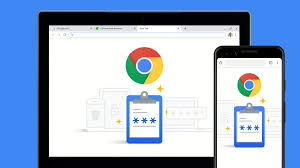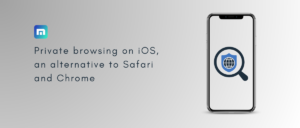The internet serves as an expansive arena brimming with countless chances for education, shopping, and reconnecting with acquaintances. However, akin to a lively urban thoroughfare, it also harbours potential dangers—specifically threats to your personal information. Every interaction online—from clicks and Google searches to emails dispatched via Gmail—might make you vulnerable to cybercriminals eager to seize your data. But don’t worry! You don’t need to be a tech expert to safeguard your online experience.

For instance, Google Safe Browsing protects over five billion devices every day by alerting users before they access risky websites or download malicious applications. This highlights the importance of taking proactive measures to secure your digital presence. In our article, we outline 15 straightforward tips designed to enhance your secure browsing—from selecting safe browsers to employing privacy tools like VPNs and password managers. Are you prepared for a safer online experience? Keep reading!
So, what exactly is browser security? Picture someone working on a laptop at a wooden desk with a Google search page displayed, a coffee cup beside them, and greenery in the background. Browser security focuses on protecting you and your data while navigating the web. It employs advanced technologies such as HTTPS that encrypt the information exchanged between your browser and websites, ensuring that no one else can access it. Think of it as a secret language understood only by your computer and the website you’re visiting. Additionally, browsers come equipped with built-in devices that identify and block malicious sites attempting to deceive you or install harmful software on your device.

Moreover, technological advancements have introduced isolation features—ensuring that any issues occurring within your browser do not affect the rest of your computer system. Using HTTPS is like sending messages in secure safes rather than postcards where anyone can read them. And browsers are becoming increasingly sophisticated in verifying user identity through biometric methods such as fingerprint recognition or facial scanning without requiring traditional passwords.
How to Achieve a Safe Online Browsing Experience?
Picture someone working on a laptop with the Google homepage displayed. On the wooden table beside them, there’s a coffee cup, some plants, and various other items in a brightly lit room. Ensuring your online safety while browsing is not as complicated as it may seem. You can enhance your security by modifying your search methods and incorporating valuable tools into your browser. Here’s a quick guide to get you started!
- Switch Your Default Search Engine Opting for a different default search engine is an intelligent choice for those aiming to safeguard their online privacy. Many users tend to stick with pre-installed options like Google or Bing, but there are superior alternatives available. For example, DuckDuckGo does not track or retain your search history, which means third parties can’t purchase your information since it’s never collected in the first place. Imagine searching for something without being bombarded by targeted advertisements the following day—that’s what DuckDuckGo provides! I made the switch myself and experienced a significant improvement in my browsing; no more intrusive ads trailing me! Moreover, changing your search engine is quite simple across various devices, including Windows 11 PCs, macOS laptops, and Android smartphones—just navigate to the browser settings, and you’ll find the option easily.
- Strengthening Online Security with Add-ons After selecting a new search engine, the next step for users is to improve their online safety. A prudent approach involves employing specialised tools known as browser add-ons that enhance the security of their web experience. One notable example is HTTPS Everywhere; this helpful tool encrypts most interactions with websites, making it difficult for potential eavesdroppers to monitor users’ activities. Many individuals have found comfort in using it, appreciating the invisible protection it provides during their browsing sessions. Additionally, the Maxthon Security Browser Extension serves as a robust defence against intrusive advertisements and covert trackers, further safeguarding users’ online experiences.
- Modify Your Browser Configuration Adjusting your browser settings is an intelligent strategy for enhancing security. It allows you to manage your online presence and fend off intrusive trackers. Here’s a checklist to help you begin: Activate incognito mode (or private browsing) when accessing sensitive information. This ensures that your browser doesn’t save a record of your activities.

Turn on the Do Not Track option, signalling websites that you prefer not to have your behaviour monitored. Add an ad blocker extension to eliminate those pesky pop-up advertisements and enjoy a more streamlined web experience. Frequently delete your browsing history and cookies; keeping things organised minimises the risk of prying eyes (more details in point 5). Reject third-party cookies in your privacy settings, as these track you across various sites—definitely not ideal.
Additionally, consider these options for significantly boosting browser security. However, they may compromise user experience, so proceed with caution: Disable bookmark syncing if you access the internet from multiple devices to close potential security loopholes. Turn off autofill for forms and login fields; while entering information manually can be inconvenient, it enhances safety. I’ve discovered that restricting JavaScript on unfamiliar sites helps avoid malicious scripts altogether.
- Protecting Privacy on Wi-Fi Networks: In today’s digital age, ensuring online safety requires vigilance regarding internet connections. Public Wi-Fi may seem like a convenient option for quick access, but it comes with considerable hazards. A personal experience highlighted this risk when an individual’s email account was compromised while using unsecured café Wi-Fi. Since then, they have made it a practice to use a VPN (Virtual Private Network) whenever connecting to public networks. A VPN functions as a secure tunnel for data, safeguarding it from potential cyber threats.
Before joining any Wi-Fi network, it’s crucial to confirm its authenticity to avoid falling prey to fraudulent hotspots set up by cybercriminals aiming to capture sensitive information. Furthermore, users need to activate their VPN immediately upon connecting to public Wi-Fi; this straightforward step can thwart unauthorised access to personal data and browsing habits. In cases where the public network does not offer encryption, there is no need for concern! The VPN will establish an encrypted channel for all online activities (additional details about VPNs can be found in point 12).

- Eliminating Browser Cookies and Cache Data: Cookies are helpful in helping websites remember users, but an excessive number can slow down browsing. Regularly clearing cookies and cache not only boosts performance but also safeguards against potential hackers seeking to access personal information. Here is a method that one individual employs to maintain an efficient and secure online experience:
They begin by opening their preferred web browser, Chrome. Next, they navigate to the settings menu, usually indicated by three dots or lines in the corner of the window. From there, they delve into the privacy and security settings—though the terminology may vary between browsers. They look for options such as Clear browsing data or something similar.
After selecting a time frame for data removal—often opting for All time to erase everything—they ensure both Cookies and other site data and Cached images and files are checked before proceeding to click on Clear data. Although this process may take a moment, after performing it monthly, this individual has observed improved computer performance and faster website loading times as a result.

- Utilize Multiple Email Accounts
Having several email addresses is akin to donning different hats for various purposes. You should maintain one for personal correspondence, another for online purchases, and a third dedicated to work-related matters. This strategy helps keep your primary inbox tidy and shields it from spam or more malicious threats like phishing attempts aimed at compromising your information.
By distinguishing between professional and personal communications, you minimise risks. Picture each email account as a security guard protecting your digital realm. For instance, you could create a Gmail account specifically for signing up on websites that require an email but raise some red flags. If this account starts receiving suspicious messages or excessive spam, you’ll be alerted without jeopardising your primary Google account. Additionally, using services like Yahoo or Hotmail can provide extra barriers against potential dangers lurking online, ready to target unsuspecting users through their emails.
- Establishing Robust Passwords
Formulating strong and unique passwords is akin to ensuring your door is securely locked at night; it serves as a fundamental step in protecting your assets. While many people prefer passwords that are easy to remember, these often become easy targets for cybercriminals. For instance, using password123 is as futile as attempting to secure a bicycle with a toothpick—clearly not the best strategy! Consequently, for all accounts, significant ones like email or banking, it is crucial to create passwords that blend various elements: uppercase and lowercase letters, numbers, and perhaps some special characters (like ! or &). Aim for at least 12 characters in length; the more complex the password, the harder it becomes for anyone to breach your digital defences. This lesson was learned firsthand when one of my simpler passwords was compromised, allowing an intruder access to my email from afar. Since that incident, I have committed myself to developing intricate and distinctive passwords for each account. It’s similar to equipping every entryway in one’s home with its unique lock. At the same time, a burglar might succeed in picking one lock, but overcoming all of them proves significantly more difficult.

Avoid repeating past mistakes; combine letters and numbers creatively as if you are concocting an exceptionally secure alphabet soup. Now, let’s transition into the following subject: employing a Password Manager.
Safeguarding online information should always take precedence. Password managers serve as valuable tools that securely consolidate all your passwords in one location while utilising encryption techniques to protect them from hackers. One should regard their information as invaluable treasure and be discerning about where they store their keys. Having personally utilised password managers, I can vouch for how they simplify life significantly. Instead of struggling to recall numerous complicated passwords or writing them down in insecure locations, I only need to remember a single master password.
- Enable Two-Factor Authentication Implementing two-factor authentication (2FA) is a crucial step in safeguarding your accounts. It acts as an additional layer of security for your online presence. Here’s how it works: first, you input your password—this is the initial step. Next, a code is sent to your mobile device or generated by an app to verify your identity—this constitutes the second step. This approach combines something you know (your password) with something you possess (your phone or a security token).

As a result, even if someone manages to acquire your password, they can access your account while also having that second element. Opting for 2FA demonstrates a proactive stance against intruders attempting to infiltrate sensitive areas like your email or social media accounts. We all value our privacy! For optimal online safety, particularly for critical applications like banking and secure emails where confidential information may be exchanged, incorporating two-factor authentication is an intelligent choice.
- Choosing a 64-bit web browser significantly boosts online security, akin to upgrading to a more robust lock on one’s front door. This decision not only enhances protection while surfing the web but also ensures a safer experience overall. Comodo Dragon serves as an excellent example of such a browser, built on a strong framework that prioritises privacy and security during online interactions. It effectively prevents access to harmful websites and shields users from misleading phishing attacks. Another commendable choice is Waterfox, explicitly crafted to leverage the full potential of 64-bit systems.
After facing multiple malware issues, one individual opted for Comodo Dragon and was amazed by the transformation it brought—markedly improved speed, elimination of unexpected crashes, and the comforting assurance that their data remained secure. Moreover, verifying whether one is using the latest version is quite simple; just head over to the Help or About section within the browser settings.

- Opt for a More Secure Browser
Choosing a secure browser is akin to locking your digital door. These browsers come with built-in features that block intrusive ads, maintain your anonymity through private browsing modes, and even help conserve battery life. They also provide continuous protection with automatic updates against emerging threats. For those who prioritise digital privacy (which we all should), trying out these browsers is like entering a safer area of the internet. With integrated tools such as script blockers and data encryption via HTTPS connections, it’s no surprise that Firefox has been rated highly for security this year. Interested in switching? Discover what constitutes a secure enterprise browser and what features make it safe.
- Employing a VPN for Protection Against ISPs
After selecting a secure browser, the next crucial step is to safeguard one’s online activities from the prying eyes of internet service providers. A Virtual Private Network (VPN) serves this purpose effectively by masking the user’s IP address and encrypting their data. Whether accessing bank statements at a café or browsing from home, users can keep intruders at bay. Various options, such as NordVPN, Surfshark, and ExpressVP, N offer excellent security features while adhering to stringent no-log policies that ensure online activities remain private. Furthermore, these services include kill switches that automatically disconnect internet access if the VPN connection drops, thereby protecting sensitive information.

The significance of this protection in daily life cannot be overstated. There was a time when an individual neglected to activate their VPN before using social media on public Wi-Fi. Almost instantaneously, they began receiving targeted advertisements related to their posts across various devices connected to their home network. This incident highlighted how easily ISPs can track online behaviour without adequate safeguards like VPNs in place. Since then, they have made it a priority to activate their virtual privacy shield before going online—a straightforward yet vital step for secure browsing that all computer users should consider adopting.
- Invest in Reliable Antivirus Software
Selecting the right antivirus program is akin to equipping your computer with armour. A friend of mine once clicked on what appeared to be a harmless download link and ended up with a severe malware infection. Strong antivirus software could have prevented that incident. Fortunately, high-quality antivirus solutions come loaded with features designed to thwart these threats before they can cause damage. They actively scan websites you visit and files you download in real time, ensuring nothing malicious slips through the cracks.

With this protective measure, even if you accidentally stumble into a risky area online, it will alert you before any serious issues arise. This is especially important for those seemingly legitimate emails that are actually traps set by cybercriminals looking to steal your personal information or hold your files hostage, until you pay them off. The best part? This vigilant protector operates quietly in the background, continuously updating its database of harmful sites and virus definitions without disturbing your workflow. As I browse the internet, feeling reassured by this protection, my computer remains both fast and secure.
- Practice Good Online Manners
Now, let’s discuss the importance of maintaining decorum while online—not just for courtesy but also for safety reasons. Think of the internet as an expansive city; just as you adhere to traffic rules while walking down the street, it’s equally important to follow guidelines when navigating the web.
Avoid dubious areas of the internet and steer clear of torrent sites, as they frequently harbour malware. Whenever possible, opt for HTTPS websites. This is akin to walking on well-lit streets at night; these sites encrypt your information, making it harder for others to steal it. Always log out from platforms like Facebook or your banking site after use; it’s similar to locking your car to keep your valuables secure when you’re not present. And let’s be honest—being tracked in real life is irritating, right? The same applies online with tracking cookies and digital fingerprinting. Utilise privacy features in your browser and ad-blocking tools (as mentioned earlier) to fend off intrusive trackers while you browse or shop online.

Keeping your computer’s operating system and web browsers updated is essential. These updates provide critical fixes against emerging threats that could jeopardise your secure browsing experience. Enable automatic updates for your operating system—whether it’s Windows, macOS, or another platform—so that you always have the latest protections without needing to check manually. Regularly update browsers like Firefox or Google Chrome since they serve as your initial defence while surfing the web; having the most current version enhances security against potential risks. Also, ensure that your security software and antivirus programs are up-to-date as they protect against malware and other cyber threats that could endanger your browsing activities.
Consider using a VPN service when you go online. Updates for these services often include enhanced privacy features designed to safeguard against new data collection techniques employed by ISPs and other malicious entities.

Another wise strategy is to use a sandbox application. Imagine playing in a digital sandbox where only you dictate what can enter or exit.
In an unexpected turn of events, when a user navigates to a website that raises red flags, there’s no risk of it tampering with the files on their computer. This is because the interaction occurs within a safeguarded environment that effectively neutralises any potential online threats. The user’s data remains protected; as soon as they exit the application linked to these protective technologies, everything—yes, absolutely everything—is erased as if the encounter never happened. It can be likened to an advanced version of incognito mode for browsers; even the most sophisticated trackers and malicious software are unable to penetrate these frequently updated security measures. Therefore, utilising these sandbox applications proves to be not just prudent but also akin to banishing cyber threats before they have an opportunity to affect the user.
Shifting focus, it is essential to discuss how one can ensure safety on social media platforms. Safeguarding personal information is paramount—a lesson learned firsthand after oversharing in a post led to unwanted messages flooding in. Individuals need to think twice before sharing anything personal or allowing applications access to their location data. Given that social media platforms often modify their privacy settings, staying informed can be pretty challenging. To combat this, some have adopted the practice of reviewing their settings on a monthly basis, allowing them to catch any new changes that might inadvertently expose more information than they are willing to share.
In summary, here are some tips for ensuring safe browsing in 2024: Stay vigilant during your online activities by switching search engines and adjusting browser preferences. Utilise helpful extensions for added protection and ensure safe Wi-Fi practices are followed diligently. Regularly clear cookies and caches! Using different email accounts for various purposes can prevent potential issues down the line. And don’t forget—the use of strong passwords is essential!
Having robust passwords is essential; even better, let a password manager take care of them for you. Interested in two-factor authentication? Absolutely—it’s an excellent way to enhance your security! Opt for 64-bit browsers, as they provide superior protection online; they’re simply more resilient and secure overall. Think about using browsers that prioritise your privacy—it’s a significant advantage for maintaining anonymity! Utilising a VPN protects you from unwanted surveillance; it’s akin to surfing the web incognito. Don’t underestimate the importance of antivirus software; consider it your digital guardian against potential threats lurking around. Keep your system updated to mitigate risks—it’s like giving your computer its annual vaccination! Sandbox applications add a layer of security when navigating unfamiliar areas of the internet—think of it as playing in a safe environment. Ensure that your social media activities remain private by adjusting privacy settings carefully—you don’t want any surprises! Ultimately, while tools and features are essential, your decisions and behaviours significantly contribute to your online safety.
Maxthon
Maxthon adopts a holistic strategy to bolster the security of web applications through a range of innovative techniques. Central to this approach is the implementation of cutting-edge encryption protocols, which are essential for safeguarding data as it moves between users and web applications. This robust encryption serves as a protective shield against unauthorised access, ensuring that sensitive information such as passwords and personal details is securely transmitted.

Another key element of Maxthon’s security framework is its commitment to regular updates. The browser emphasises the importance of timely updates to fix any identified vulnerabilities and encourages users to enable automatic updates. This proactive strategy guarantees that users receive the latest security enhancements and patches without any delays.
Furthermore, Maxthon includes an integrated ad blocker to protect users from potentially harmful ads. By filtering out undesirable content, this feature significantly reduces the risk of phishing attempts and drive-by downloads that could jeopardise user safety.
To enhance user protection further, Maxthon offers a phishing protection feature that actively checks for suspicious websites. By alerting users before they visit potentially dangerous sites, this additional layer helps safeguard personal information from cyber threats.
For those who prioritise privacy during their online activities, Maxthon offers private browsing modes that prevent the storage of browsing history or cookies in these sessions. This functionality allows users to manage their digital footprint effectively.
Additionally, Maxthon incorporates an internal firewall that scrutinises both incoming and outgoing traffic for any signs of suspicious behaviour. This extra layer enhances the defence against potential threats targeting web applications.
The browser also utilises sandbox technology to isolate processes running in different tabs, preventing malware from spreading between tabs or affecting the overall system environment.
